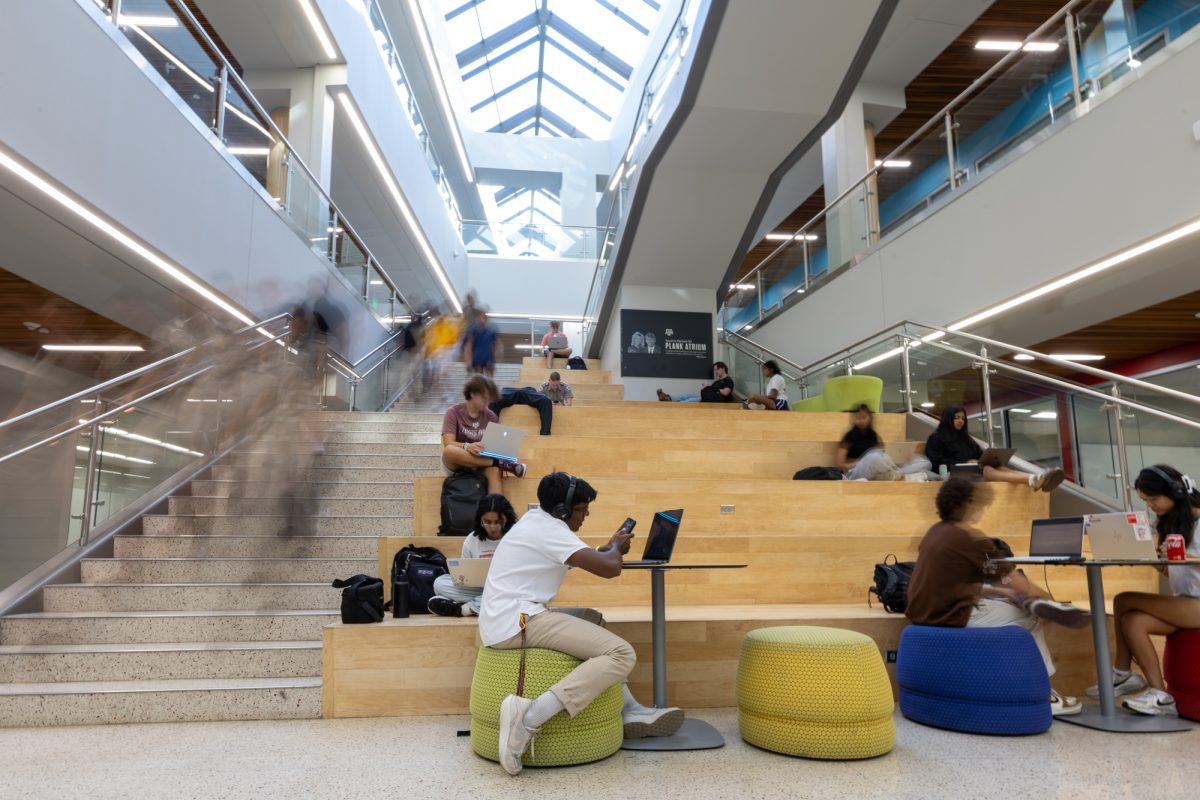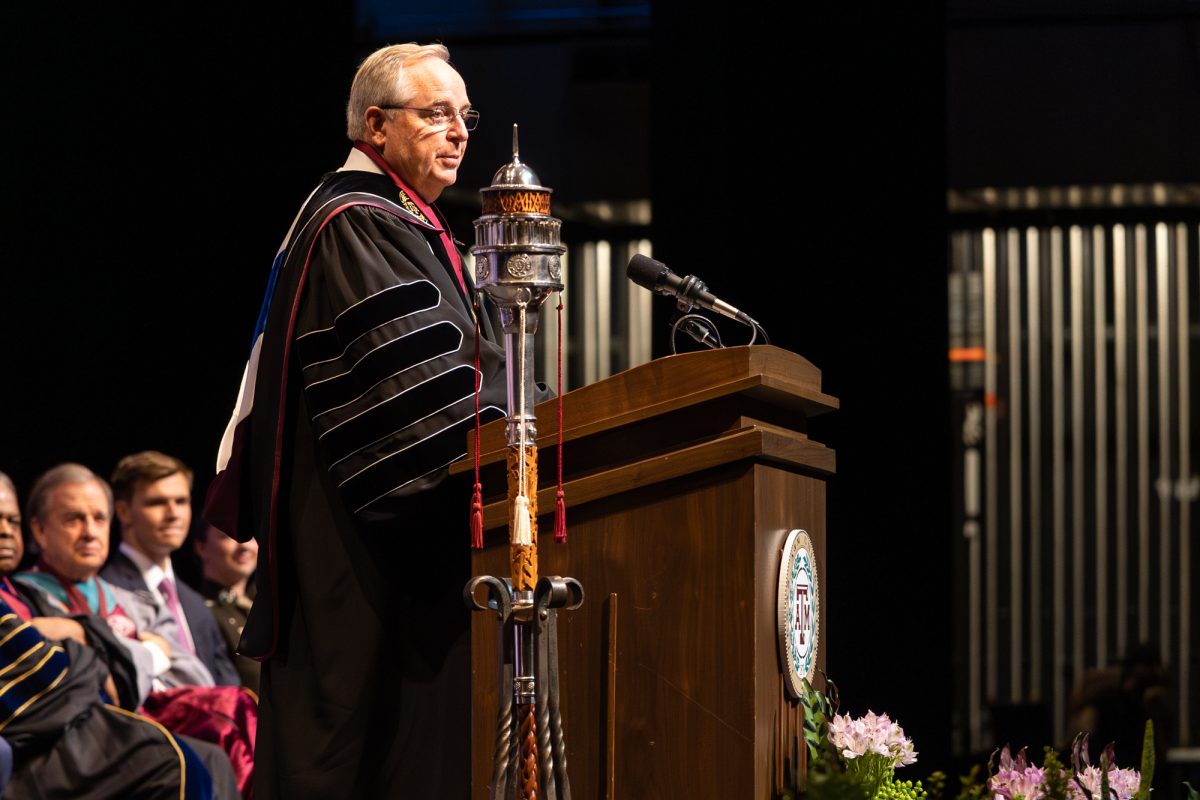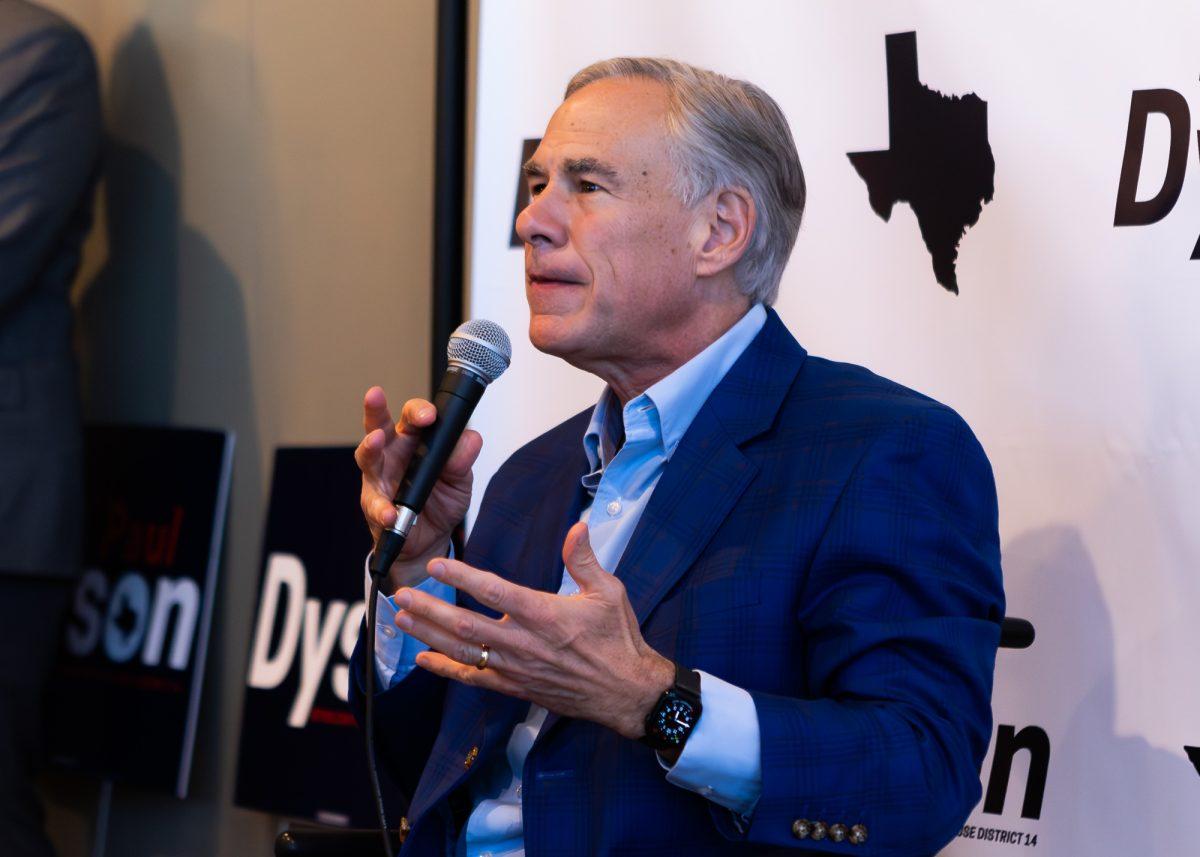Texas A&M’s College of Engineering launched the 25 by 25 initiative in 2013, seeking to have 25,000 engineers across its various locations and programs by the year 2025. As of fall 2023, the college met that goal and reported a total enrollment of 25,132 students across the College Station, Galveston, Qatar and McAllen campuses, as well as its online master’s degree and statewide engineering academy programs.
In 2010, studies indicated there would be a shortage of engineers in the future. Along with addressing this demand, the initiative has also allowed the college to increase capacity in engineering programs and admit more students while continuing to maintain high-quality programs, according to Senior Associate Dean for Academic Affairs Harry Hogan, Ph.D.
“We observed that we were having a lot of students apply to our engineering programs and not being … admitted even though they were qualified because of our capacity limitations, so that led to the intentional growth initiative,” Hogan said.
In an article by the A&M engineering college, Texas A&M President Mark A. Welsh III wrote that reaching the goal also reflected the university’s commitment to its land-grant mission.
“The College of Engineering’s dedication to excellence ensures that the university remains at the forefront of engineering education, equipping our students with the knowledge and skills they need to succeed in a competitive global economy,” Welsh wrote.
Over the years, the college has increased the number of incoming freshmen each year. However, nearly 50% of enrollment comes from improving retention rates within the college.
“We have data to show that we have had steadily increasing retention rates … over the same time period that we’ve been through this aggressive growth period and I think that’s remarkable,” Hogan said. “We’ve improved our graduation rates over the same time period and a lot of time and effort has been put into student success programs and support resources.”
With an increasing number of students, the college added additional faculty members as well. They also partnered with the Math Learning Center and the Academic Success Center to introduce resources to improve student success.
“The increase in the number of peer [Teaching Assistants] is a very significant increase in terms of resources,” engineering professor Tanya Wickliff, Ph.D., said. “There’s been an increase in the number of faculty, and then incorporating technology, we moved to a different platform with Canvas … because some believe it had additional functionality … So I think in that respect … the College of Engineering in general has done a pretty good job.”
Despite an increasing number of students and a subsequent rise in class sizes, Wickliff said her personal teaching styles have remained unchanged.
“I always try to bring real world examples, because I’m a professor of practice,” Wickliff said. “So I try to bring corporate examples, I try to address transitional issues into college, … study skills, time management, preparing for your internship … and the subject matter has been consistent. So I think that for me personally, my teaching style is akin to one that is participatory and team-based, and so it hasn’t changed.”
Apart from adding more faculty members and resources, programs such as the Entry-to-a-Major process, or ETAM, though not a direct result of 25 by 25, have helped improve retention rates within majors. Departments within the college have also increased enrollment capacities to cater to the growing student body.
Despite the growing number of engineering majors on campus, the demand for Aggie engineers has continued to grow, with more companies actively seeking to recruit A&M graduates for full-time positions and internships.
“Aggie engineers are some of the best, so I believe that all of our graduates have a great foundation, we make sure they have … exposure to something beyond just academia,” Wickliff said. “They’re getting exposed to work experience, research experience and, ultimately, all of these engineers are needed to solve these real world problems and global issues, and we have a very diverse global student body represented.”
With the goal for 25 by 25 reached, the college aims to maintain these enrollment numbers, while also improving different areas such as academic programs and curriculums within departments to remain responsive to the needs of students and industries.
“We have a new dean who started just this past spring,” Hogan said. “He’s appointed a committee for strategic planning and that strategic planning committee will start working over the next months and probably put out a report in six to 12 months.”
Furthermore, the college is working towards growing its graduate programs, specifically the master’s programs.
“One of the things we want to continue to work toward is having our students … think about graduate school, because … the nature of these technical challenges is something that I think our students will be better equipped to address if they have a little bit more education,” Hogan said
Despite the growing enrollment, A&M’s engineering programs continue to foster a sense of community and fellowship within the college.
“I think for the size of our campus and our engineering program, we do surprise people in terms of the level of personal attention, the level of connectedness and community that you feel with just a little bit of effort to get involved and get connected,” Hogan said. “You’re going to find it easy to realize that you are part of this family, that you’re part of this bigger community.”
into student success programs and support resources.”
With an increasing number of students, the college added additional faculty members as well. They also partnered with the Math Learning Center and the Academic Success Center to introduce resources to improve student success.
“The increase in the number of peer [Teaching Assistants] is a very significant increase in terms of resources,” engineering professor Tanya Wickliff, Ph.D., said. “There’s been an increase in the number of faculty, and then incorporating technology, we moved to a different platform with Canvas … because some believe it had additional functionality … So I think in that respect … the College of Engineering in general has done a pretty good job.”
Despite an increasing number of students and a subsequent rise in class sizes, Wickliff said her personal teaching styles have remained unchanged.
“I always try to bring real world examples, because I’m a professor of practice,” Wickliff said. “So I try to bring corporate examples, I try to address transitional issues into college, … study skills, time management, preparing for your internship … and the subject matter has been consistent. So I think that for me personally, my teaching style is akin to one that is participatory and team-based, and so it hasn’t changed.”
Apart from adding more faculty members and resources, programs such as the Entry-to-a-Major process, or ETAM, though not a direct result of 25 by 25, have helped improve retention rates within majors. Departments within the college have also increased enrollment capacities to cater to the growing student body.
Despite the growing number of engineering majors on campus, the demand for Aggie engineers has continued to grow, with more companies actively seeking to recruit A&M graduates for full-time positions and internships.
“Aggie engineers are some of the best, so I believe that all of our graduates have a great foundation, we make sure they have … exposure to something beyond just academia,” Wickliff said. “They’re getting exposed to work experience, research experience and, ultimately, all of these engineers are needed to solve these real world problems and global issues, and we have a very diverse global student body represented.”
With the goal for 25 by 25 reached, the college aims to maintain these enrollment numbers, while also improving different areas such as academic programs and curriculums within departments to remain responsive to the needs of students and industries.
“We have a new dean who started just this past spring,” Hogan said. “He’s appointed a committee for strategic planning and that strategic planning committee will start working over the next months and probably put out a report in six to 12 months.”
Furthermore, the college is working towards growing its graduate programs, specifically the master’s programs.
“One of the things we want to continue to work toward is having our students … think about graduate school, because … the nature of these technical challenges is something that I think our students will be better equipped to address if they have a little bit more education,” Hogan said
Despite the growing enrollment, A&M’s engineering programs continue to foster a sense of community and fellowship within the college.
“I think for the size of our campus and our engineering program, we do surprise people in terms of the level of personal attention, the level of connectedness and community that you feel with just a little bit of effort to get involved and get connected,” Hogan said. “You’re going to find it easy to realize that you are part of this family, that you’re part of this bigger community.”











